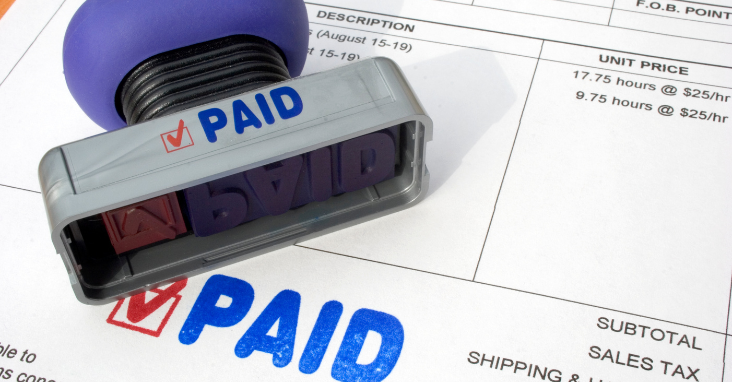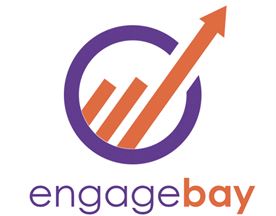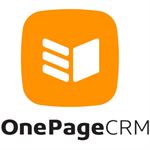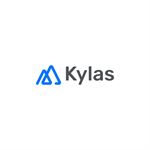Hey there, savvy reader! So, you’ve landed on this page, possibly searching for insights into the intricacies of the business world, and today’s topic of discussion is the often mentioned but seldom deeply understood “sales invoice.” Whether you’re a budding entrepreneur, an established business owner, or simply a curious mind, there’s always a little more to uncover about this foundational accounting document. And honestly, it’s about time someone took the reins to demystify it.
You know, in our day-to-day lives, we engage in numerous transactions without giving much thought to the paperwork that tags along. Think about that morning coffee you grabbed from the café around the corner. After taking your sip, you’re handed a receipt, which you probably stuff in your pocket or purse, right? But let’s shift gears for a second. Imagine you’re now the owner of that café. That simple receipt evolves into something more complex, more detailed—a full sales tax invoice. A sales invoice serves to request payment, whereas a receipt is payment proof of a sold product.
Why the complexity? Well, in the business realm, especially when it comes to Business-to-Business (B2B) transactions, the stakes are higher. The nature of how business sells physical products or services, the volume, and the agreements—all of it changes. So, a mere receipt and invoice date won’t cut it. You need something more comprehensive, and that’s where the sales invoice comes into play.
But, what’s the big deal about it? Why does it command such importance? Is it merely a piece of paper with numbers, or does it hold some magical powers in the world of commerce? In this expansive guide, we’re going to embark on a journey deep into the heart of sales invoices. We’ll uncover its nuances, its significance, its components, and even its evolution in the digital age.
By the end of this piece, not only will you know what a used sales invoice template is, but you’ll appreciate its pivotal role in modern commerce. Whether you’re in the throes of drafting one, or simply trying to understand its anatomy, I promise you a clear and comprehensive breakdown. So, let’s dive in, shall we?
Sales invoices are crucial documents in business and sales transactions, providing clarity contact information on what’s being sold, its price, and setting expectations between buyers and sellers.

Understanding the Sales Invoice
Navigating the business landscape requires fluency in its language and tools. One of the foundational tools in this domain is the free sales invoice template. However, its significance isn’t just rooted in its prevalence, but in its functionality and the integral role it plays in the customer relationships and fostering healthy business relations.
What is a Sales Invoice, Really?
At its core, a sales invoice is a structured document, a bridge of communication, if you will, between a seller and a buyer. It meticulously details the goods or other services rendered that were provided, their quantities, the agreed-upon prices, and other salient terms of the sales transaction. It’s not just a bill stating what you owe—it’s a comprehensive record that documents the transaction’s every facet.
Consider this analogy: if a business deal is like a theatrical play, the sales invoice is both the script and the ticket stub. It sets the scene by listing out the actors (goods/services) and their roles (prices, quantities), while also serving as a keepsake of the event.
The Pillars of a Sales Invoice
Why is this document held in such esteem? Let’s delve into its core purposes:
Legal Proof: In any dispute or discrepancy, the sales invoice stands as a testament to the agreement made between two parties. It’s more than just a piece of paper—it’s a legally binding record of commitment.
Financial Tracking: Ever tried retracing your steps without footprints? For businesses, an invoice is that footprint. It offers clarity on sales trajectories, helping businesses monitor growth, setbacks, and patterns.
Tax Implications: As taxing as taxes can be (pun intended), they’re an undeniable aspect of business operations. Invoices help businesses accurately report taxable sales and, when the time comes, claim necessary tax credits or deductions.
Payment and Terms: Ambiguity is the arch-nemesis of efficient business. Invoices obliterate this ambiguity by setting clear payment terms, methods, and due dates, ensuring both parties are on the same page.
Client Relations: Think of a sales invoice as a handshake at the end of a meeting—it reinforces trust. A detailed, clear invoice showcases professionalism and commitment to transparency, fostering trust and long-term relationships.
Key Points:
The sales invoice is a testament to a transaction, detailing every nuance.
It’s essential for legal, financial, tax, and relational aspects of business.
A clear, comprehensive sales invoice is indicative of a business’s professionalism and commitment.
The Evolution of the Sales Invoice
Over time, the professional sales invoice itself has adapted to the changing business environment. Gone are the days of manual ledger entries and hand-written bills. The digital age has ushered in a new era of electronic invoicing, making the process more streamlined, efficient, and environmentally friendly. This evolution has also expanded the accessibility and usability of most sales invoices themselves, integrating them into various software solutions, enhancing their features, and ensuring they remain a cornerstone of the business lexicon.
Key Points:
Digitalization has transformed sales invoicing, making it more efficient.
E-invoices are becoming the new norm, integrating with various business software solutions.
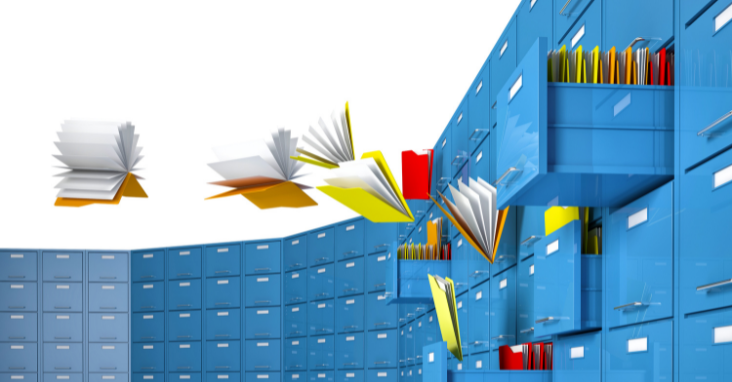
Differentiating Sales Invoice from Other Invoices
In the vast arena of business documentation, it’s easy to get lost in a sea of terms, especially when many of these terms sound so similar. The word “invoice” is often used as a blanket term, but it’s crucial to understand the nuances that separate different types of sales invoices work. Here’s a more in-depth exploration of how a sales invoice stands out from its close relatives.
Sales Invoice vs. Purchase Invoice
At a glance, a sales invoice and a purchase invoice might seem identical—after all, both detail a transaction between a buyer and a seller. But here’s the catch:
Sales Invoice: This document is generated by the seller and presented to the buyer. It represents a record of a completed transaction, itemizing the products or services sold, their prices, quantities, and the total amount due.
Purchase Invoice: While also created by the seller, the purchase invoice acts as a request for payment. It’s the mirror image of the sales invoice from the buyer’s perspective. Upon receiving goods or services, the buyer gets a purchase invoice detailing the transaction, which the buyer’s accounting department uses to match against their purchase order and delivery note.
The dance between these two invoices ensures accuracy and confirmation from both ends of the transaction.
Sales Invoice vs. Tax Invoice
Taxes—the inevitable part of any business transaction. While all business transactions have tax implications, the way they’re documented varies:
Sales Invoice: It details the transaction, providing a breakdown of goods/services provided, prices, and the total amount payable. While it might include tax details, it isn’t exclusively designed for that.
Tax Invoice: This invoice is specifically curated for transactions that involve taxable sales. It’s the go-to document for tax compliance, detailing the tax component (like VAT or GST) involved in a particular sale. In many jurisdictions, businesses require a tax invoice to claim tax credits on their purchases.
Sales Invoice vs. Proforma Invoice
While a proforma invoice might sound fancy, it has a distinctly different role:
Sales Invoice: As discussed, it’s a record of a transaction that has already taken place. It’s legally binding and dictates the exact amount the buyer owes the seller.
Proforma Invoice: This document is more of a preliminary or estimated invoice. Sellers often provide it before finalizing a transaction or delivering goods/services. It gives the buyer an idea of what to expect, including the costs involved. However, since it’s based on an estimate, it’s not considered a legal demand for payment.
The proforma is like the trailer to a movie—enticing, giving you a taste of what’s to come, but not the final product.
Key Points:
While all these documents fall under the “invoice” umbrella, their purpose, timing, and legal implications differ.
Sales invoices are definitive records of transactions, while others like proforma invoices are more about setting expectations or ensuring tax compliance.
Recognizing the distinctions ensures efficient communication and smoother transactions in business dealings.

Software Tools for Managing Sales Invoices
As the business world evolves, technology has become its right hand, aiding in streamlining processes, enhancing efficiency, and eliminating manual errors. One area that has particularly benefited from this tech revolution is invoice management. Instead of drowning in piles of paper invoices or getting lost in Excel sheets, businesses are now turning to specialized software tools for managing sales invoices. You must have a system to track which invoices are paid or still pending for record-keeping and ensure an efficient cash flow for your business. These tools are designed to create, send, track, and even automate the invoicing process. Let’s explore some of the top invoice software and options available and why they’re gaining such prominence.
QuickBooks
A name that resonates with many, especially in the SME segment. QuickBooks offers a comprehensive invoicing module as part of its accounting software package.
Why it’s Useful:
- Customizable Templates: Create branded invoices that resonate with your business’s image.
- Automated Reminders: Never let a payment slip through the cracks with automatic reminders for overdue payments.
- Integration: Seamlessly integrates with various payment gateways, ensuring hassle-free transactions.
FreshBooks
Designed for freelancers and growing businesses, FreshBooks brings an intuitive interface and a set of robust invoicing features.
Why it’s Useful:
- Time Tracking: Automatically pull in billable hours when creating invoices.
- Multi-Currency Support: Perfect for businesses that have a global clientele.
- Recurring Invoices: Set it up once and let FreshBooks handle your regular clients, invoicing them automatically.
Zoho Invoice
Zoho Invoice is an offshoot of the Zoho suite, catering explicitly to invoicing needs with a clean interface and a plethora of features.
Why it’s Useful:
- Retainer Invoicing: Helps businesses manage advance payments smoothly.
- Collaborative Client Portal: Let clients view their invoices, past payments, and even communicate directly through a portal.
- Inventory Tracking: Link your inventory and invoicing, ensuring up-to-date product details and stock levels.
Invoice Ninja
Ideal for freelancers and small businesses, Invoice Ninja combines affordability with functionality.
Why it’s Useful:
- Four Different Invoice Views: Customize the appearance of your invoices.
- Kanban Boards: Visualize and track your invoicing process, moving from drafting to payment stages.
- Bulk Actions: Handle multiple invoices at once, a boon for businesses with numerous transactions.
Wave
For those just starting or on a tight budget, Wave offers free invoice management (with some paid premium features).
Why it’s Useful:
- Free to Use: With most essential features available for free, it’s a great starting point.
- Automatic Backup: Never lose an invoice with cloud storage and backup.
- Scan Receipts: Attach and record transaction receipts directly to your invoices.
Key Points:
Modern invoicing requires tools that save time, reduce manual work, and offer integrations with other software.
The right invoicing software for your business will depend on your unique needs—whether it’s automation, customizability, or budget constraints.
Utilizing these tools ensures timely payments, accurate records, and professional communication with clients.

FAQs on Sales Invoice
1. What should a sales invoice include?
A sales invoice should have the seller’s and buyer or customer’s contact information and details, product/service details, pricing, delivery date, invoice number, and payment terms.
2. Is a sales invoice the same as a receipt?
No, a receipt is proof of payment or commercial invoice, while an invoice indicates the purchase orders and amount due.
3. How long should I keep sales invoices?
Generally, for tax purposes, it’s recommended to keep all sales receipts applicable taxes, and invoices for at least seven years.
4. Can I cancel a sales invoice?
If an error is found, the invoice can be canceled and a new one issued.
5. Do I need to send a sales invoice for all transactions?
It’s good practice, especially for larger transactions or B2B deals.
6. How often should I send out sales invoices?
Depending on your business, it could be immediately after a transaction, weekly, or monthly.
7. What if a client doesn’t pay the invoice on time?
It’s essential to have clear payment terms and follow up request payment, with reminders.
8. Can sales invoices be electronic?
Yes, e-invoicing is becoming more popular and can be more efficient.
9. What’s the difference between an invoice and a bill?
In most contexts, they can be used interchangeably, but a bill usually implies an immediate need for a payment method.
10. Why do some invoices say “net 30” or “net 60”?
These terms indicate the number of days a buyer has to pay the invoice in full.

Conclusion
Sales invoices, while seemingly just pieces of paper or digital records, play a pivotal role in business transactions. They serve as official records, facilitate financial management, and help in legal and tax compliance. Understanding them and managing them efficiently can streamline your business operations and pave the way for smoother transactions. If you’re not already utilizing a software tool for this purpose, it might be time to start. Remember, clarity in business dealings is paramount, and a well-structured, sales process and sales invoice templates can be a stepping stone to that clarity.
Key Points:
Sales invoices are essential in business for various reasons.
Tools can simplify the invoicing process.
Always strive for clarity and accuracy in your invoices.

